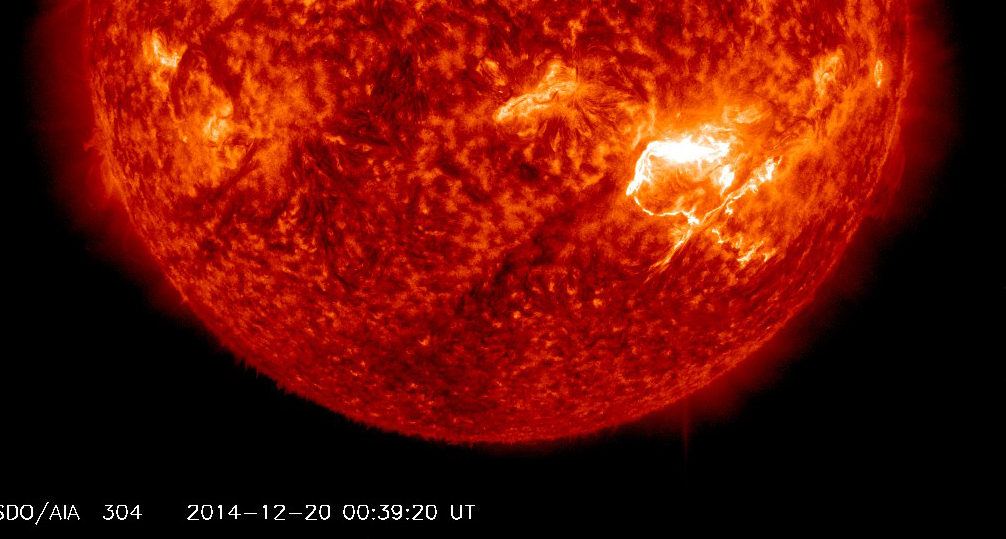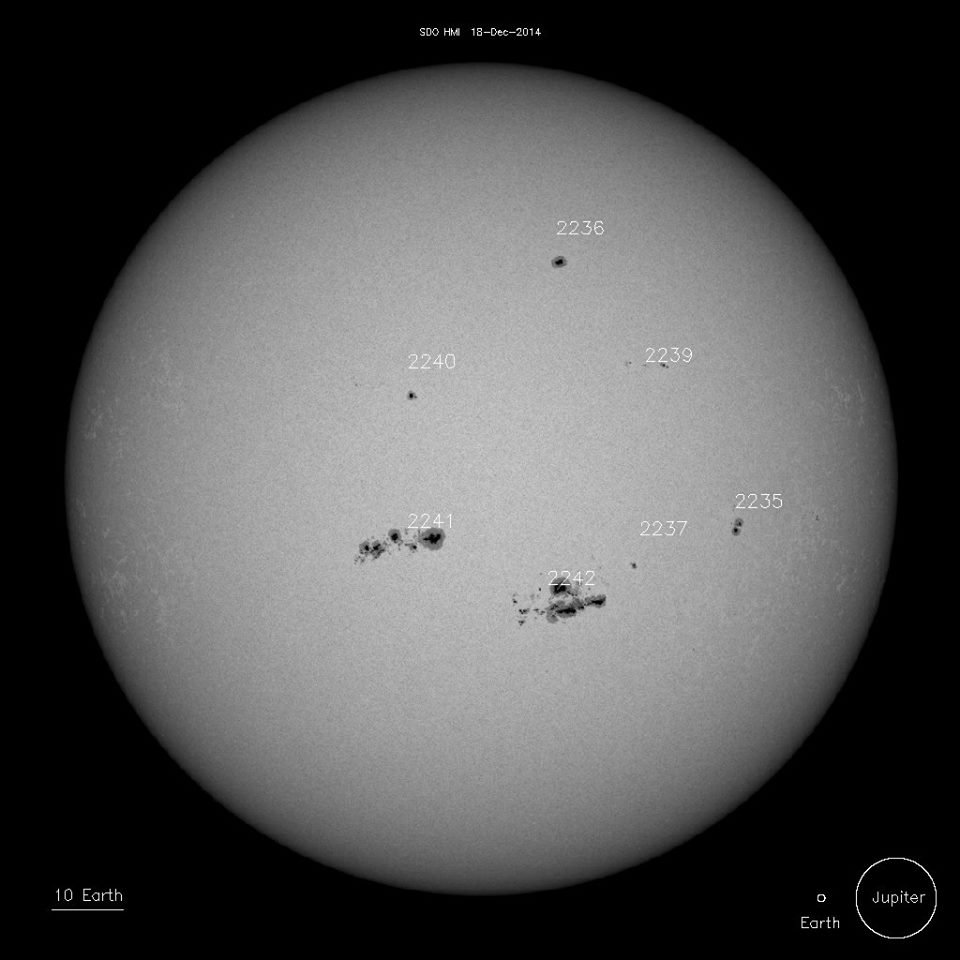Active Sun Unleashes Massive Solar Flare

The sun fired off a massive solar flare late Friday (Dec. 19), after days of intense storms from our nearest star.
The huge solar flare registered as an X1.8-class event, one of the most powerful types of flares possible, and was captured on camera by NASA's powerful Solar Dynamics Observatory. The flare triggered a strong radio blackout for parts of Earth as it peaked Friday at 7:28 p.m. EST (0028 Dec. 20 GMT), according to an alert from the U.S. Space Weather Prediction Center overseen by NOAA.
The solar flare erupted from a sunspot region classified as Active Region 2242, and more sun storms could occur from the region. [Biggest Solar Flares of 2014 in Photos]

"The region remains large and complex," SWPC experts wrote in the update. "More minor to moderate radio blackouts are expected, with an ongoing chance for another strong event."
Friday's solar flare capped an active week of sun storms. Earlier in the week, another active sunspot region called AR 2241 fired off two intense M-class (moderate) flares, one late Tuesday (Dec. 16) registering as an M8.7-class sun storm, and the other on Thursday (Dec. 18) that ranked as an M6.9 solar flare. Sunspots are regions of intense magnetic field activity on the sun that can trigger solar flares.
X-class solar flares are the strongest solar flares the sun can unleash. When aimed directly at Earth, they can disrupt communications and GPS navigation systems on Earth, and even pose a threat to satellites and astronauts in space.
M-class solar flares are about one-tenth the size of X-class flares, but can supercharge the Earth's auroras, or northern lights, resulting in dazzling displays. A huge eruption of solar material — called a coronal mass ejection — from the earlier M-class flares is expected to trigger geomagnetic storms on Earth, possibly amplifying the northern lights, this weekend, SWPC experts wrote in a separate update.
Breaking space news, the latest updates on rocket launches, skywatching events and more!
Astronomer Tony Phillips of the space weather monitoring website Spaceweather.com reported that the Friday's X1.8 solar flare sparked a high-frequency radio blackout over Australia and the South Pacific.
The sun follows an 11-year space weather cycle with lulls and peaks, with the current cycle known as Solar Cycle 24. The current cycle reached its peak phase in recent years.
Email Tariq Malik at tmalik@space.com or follow him @tariqjmalik and Google+. Follow us @Spacedotcom, Facebook and Google+. Original article on Space.com.
Join our Space Forums to keep talking space on the latest missions, night sky and more! And if you have a news tip, correction or comment, let us know at: community@space.com.

Tariq is the award-winning Editor-in-Chief of Space.com and joined the team in 2001. He covers human spaceflight, as well as skywatching and entertainment. He became Space.com's Editor-in-Chief in 2019. Before joining Space.com, Tariq was a staff reporter for The Los Angeles Times covering education and city beats in La Habra, Fullerton and Huntington Beach. He's a recipient of the 2022 Harry Kolcum Award for excellence in space reporting and the 2025 Space Pioneer Award from the National Space Society. He is an Eagle Scout and Space Camp alum with journalism degrees from the USC and NYU. You can find Tariq at Space.com and as the co-host to the This Week In Space podcast on the TWiT network. To see his latest project, you can follow Tariq on Twitter @tariqjmalik.
